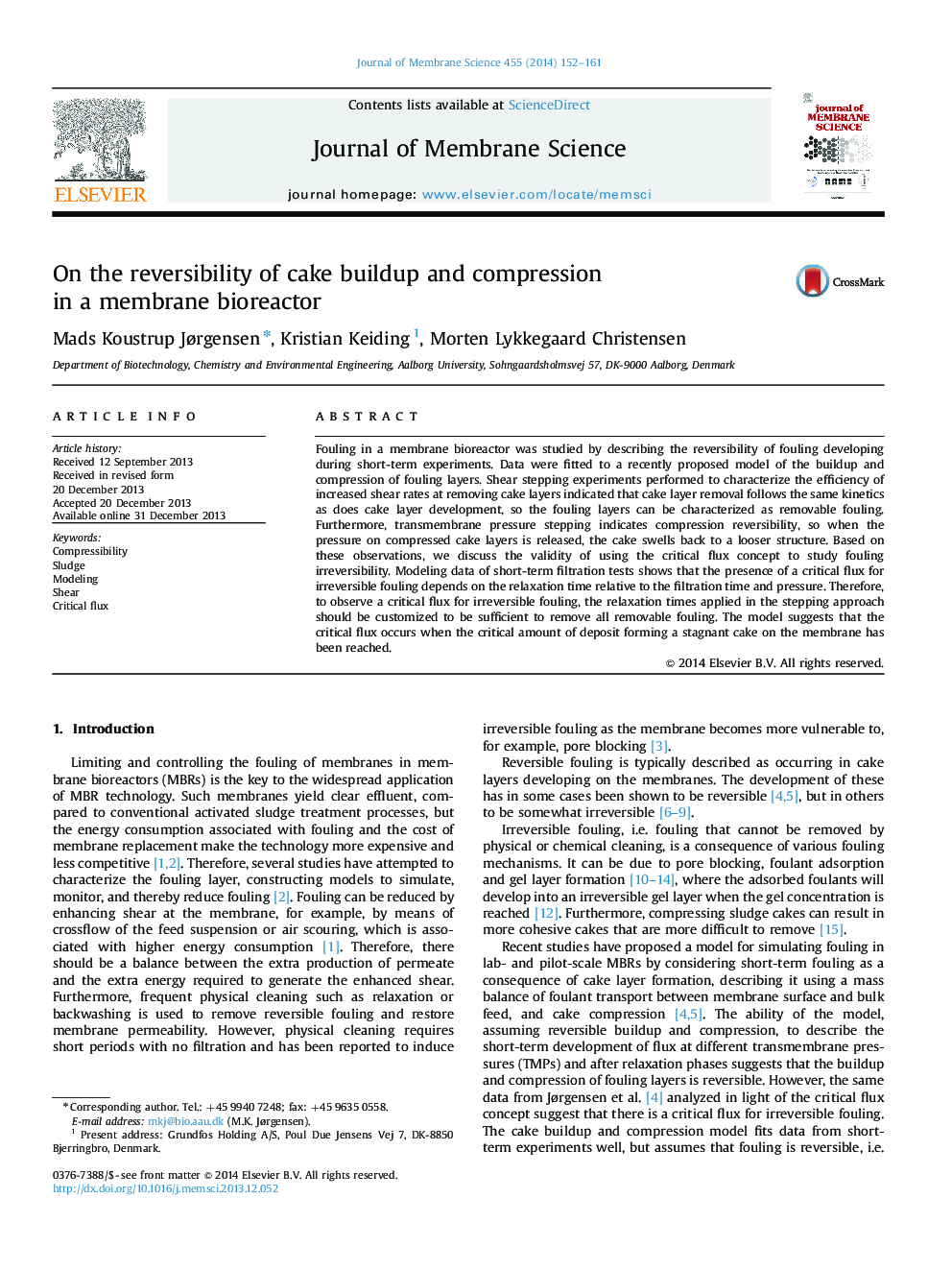| Article ID | Journal | Published Year | Pages | File Type |
|---|---|---|---|---|
| 633894 | Journal of Membrane Science | 2014 | 10 Pages |
•Shear stepping experiments were used to study the reversibility of MBR fouling.•Enhancing shear on a fouled membrane increases the flux due to cake removal.•Cake removal follows the same kinetics as does cake buildup.•MBR fouling was found to be reversible in terms of buildup and compression.•The critical flux is reached when deposits on the membrane form a stagnant cake.
Fouling in a membrane bioreactor was studied by describing the reversibility of fouling developing during short-term experiments. Data were fitted to a recently proposed model of the buildup and compression of fouling layers. Shear stepping experiments performed to characterize the efficiency of increased shear rates at removing cake layers indicated that cake layer removal follows the same kinetics as does cake layer development, so the fouling layers can be characterized as removable fouling. Furthermore, transmembrane pressure stepping indicates compression reversibility, so when the pressure on compressed cake layers is released, the cake swells back to a looser structure. Based on these observations, we discuss the validity of using the critical flux concept to study fouling irreversibility. Modeling data of short-term filtration tests shows that the presence of a critical flux for irreversible fouling depends on the relaxation time relative to the filtration time and pressure. Therefore, to observe a critical flux for irreversible fouling, the relaxation times applied in the stepping approach should be customized to be sufficient to remove all removable fouling. The model suggests that the critical flux occurs when the critical amount of deposit forming a stagnant cake on the membrane has been reached.
